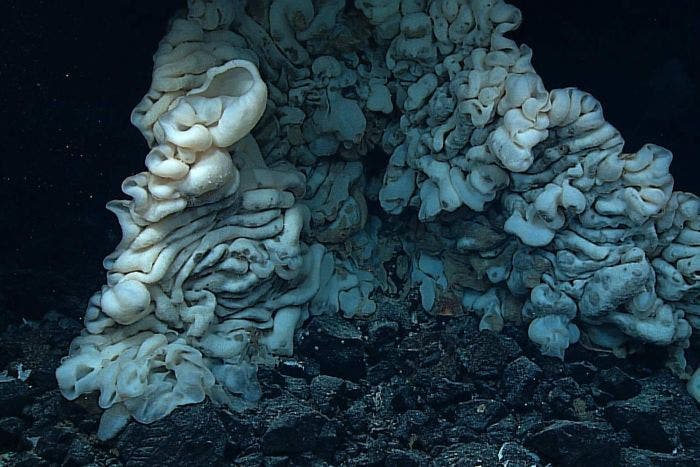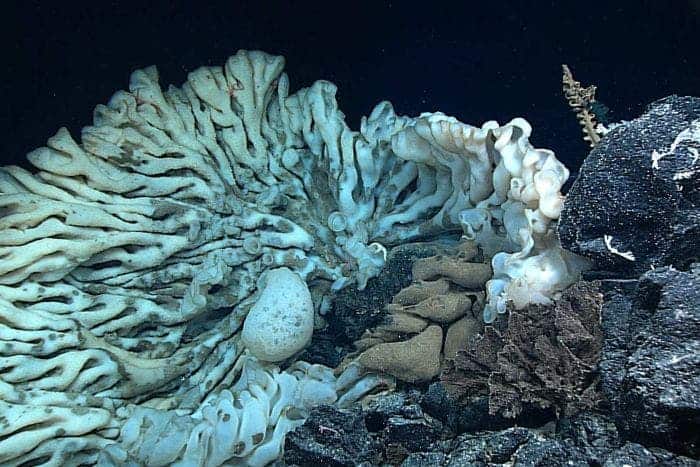During a deep-sea expedition at Papahānaumokuākea Marine National Monument, NOAA researchers found a gargantuan 12 foot by 7 foot sponge. It’s the largest any human has come across.
“The largest portion of our planet lies in deep waters, the vast majority of which has never been explored,” said Papahānaumokuākea research specialist Daniel Wagner, Ph.D, science lead for the expedition with NOAA’s Office of National Marine Sanctuaries. “Finding such an enormous and presumably old sponge emphasizes how much can be learned from studying deep and pristine environments such as those found in the remote Papahānaumokuākea Marine National Monument.”
The natural sea sponge is one of the world’s simplest multi-cellular living organisms, but it’s quite successful considering there are over 5,000 species identified by scientists. These grow in all shapes, sizes, colours and textures.
The smallest species of sea sponge is less than 1 inch long, with the average size of the largest sea sponge being 3 to 6 feet in size. The previous largest sponge was a Monoraphus sponge that grew to be over 10 feet wide. Right now, the NOAA researchers aren’t sure what to call the car-sized sponge they found 7,000 feet under the waters off Hawaii.
“It looked like a folded blanket,” Dr Christopher Kelly, a research scientist with NOAA and co-lead for the expedition, told Pacific Beat.
“It looks as though somebody took a blanket and draped it over a chair… so that’s what we called it until we got a better name for it, the folded blanket sponge,” he said.
Sponges grow very slowly, so this specimen is likely very old. Researchers guess it could be anything between a couple centuries and thousands of years old.
“Based on a microscopic examination of spicules, that specimen was identified as belonging to the hexactinellid family Rossellidae and subfamily Lanuginellinae. Aside from these two specimens, we encountered no individuals of this non reef-building species as part of the expedition, during which we conducted a total of 18 ROV dives to depths ranging from 1096 to 4829 m. The finding of such an enormous and presumably old sponge inside the Papahānaumokuākea Marine National Monument underscores the need to protect this area using the highest conservation measures available,” the researchers wrote in the paper published in Marine Biodiversity.











